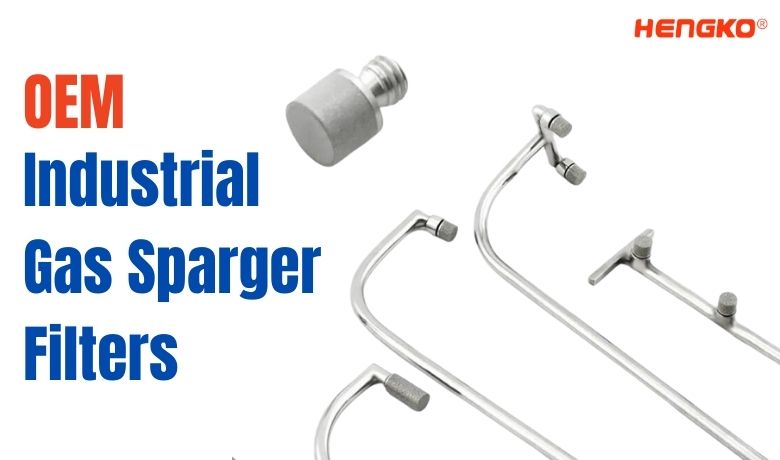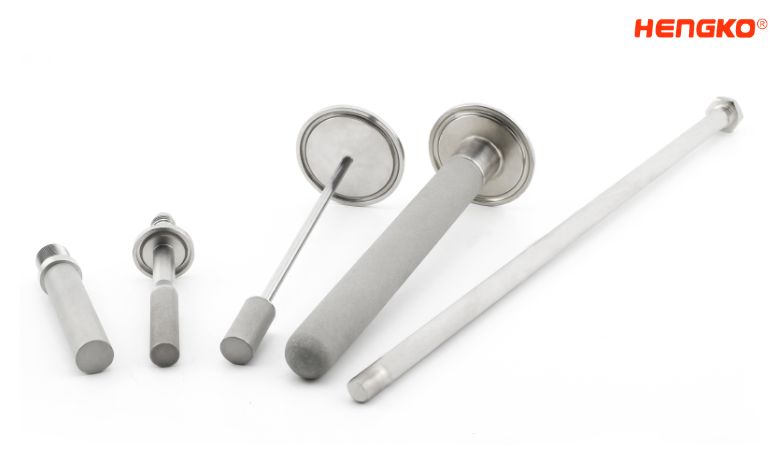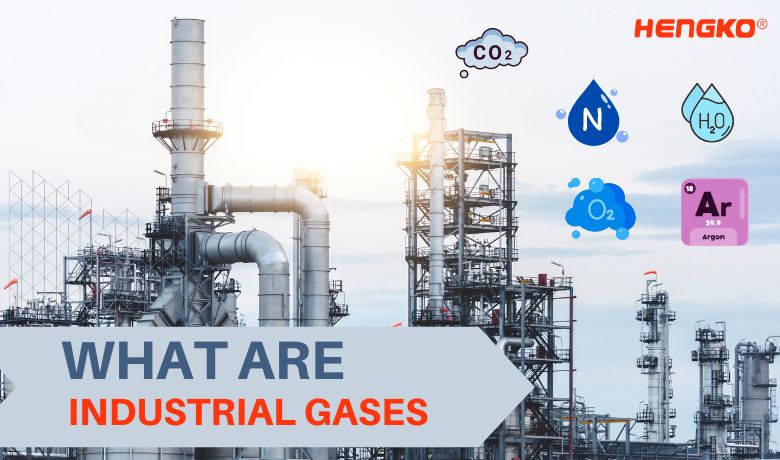Introduction
Industrial gases such as oxygen, nitrogen, carbon dioxide, argon, and hydrogen are foundational to numerous industries, including healthcare, manufacturing, and food processing. These gases must be pure and free from contaminants to ensure safe and efficient operations. Gas filters play a crucial role in maintaining this purity by removing impurities that could compromise both the quality of the gases and the safety of the processes they facilitate. Choosing the right gas filters is vital for protecting equipment, complying with regulations, and safeguarding personnel, making effective filtration a key aspect of industrial gas usage.
1: Understanding Industrial Gases
Definition and Categories
Industrial gases are gases that are produced and used in large quantities for various industrial applications. These gases are essential components in many manufacturing processes and are vital to the modern economy.
Common industrial gases include:
*Nitrogen: A colorless, odorless, and tasteless gas that makes up about 78% of Earth's atmosphere.
*Oxygen: A colorless, odorless, and tasteless gas that is essential for human and animal life.
*Argon: A colorless, odorless, and tasteless noble gas that is the third most abundant element in the Earth's atmosphere.
*Hydrogen: A colorless, odorless, and tasteless gas that is the lightest element in the periodic table.
*Carbon dioxide: A colorless, odorless, and tasteless gas that is produced by plants during photosynthesis.
Applications of Industrial Gases
Industrial gases are used in a wide range of sectors, including:
Manufacturing:
*Metal fabrication: Used for cutting, welding, and heat treating metals.
*Chemical production: Used as a reactant or catalyst in chemical processes.
*Electronics manufacturing: Used for cleaning and etching components.
Healthcare:
*Medical gas supply: Used for patient care, anesthesia, and respiratory therapy.
*Sterilization: Used for sterilizing medical equipment.
Electronics:
*Semiconductor manufacturing: Used for etching, cleaning, and deposition processes.
*LED manufacturing: Used for growing crystals and annealing devices.
*Food processing:
*Packaging: Used for modified atmosphere packaging (MAP) to extend shelf life.
*Beverage production: Used for carbonation and purging.
Other industries:
*Oil and gas: Used for drilling, production, and refining.
*Environmental protection:
Used for wastewater treatment and air pollution control.
These are just a few examples of the many applications of industrial gases.
Their versatility and importance make them essential components of modern industry.
2: Properties of Industrial Gases
Physical and Chemical Properties
Industrial gases exhibit a wide range of physical and chemical properties that influence their usage and handling. Some key properties include:
*Reactivity:
The ability of a gas to undergo chemical reactions. Highly reactive gases, such as oxygen and hydrogen,
can pose significant safety hazards if not handled properly.
*Toxicity:
The ability of a gas to cause harm to human health. Toxic gases, such as carbon monoxide, can be fatal if inhaled.
*Flammability:
The ability of a gas to ignite and burn. Flammable gases, such as hydrogen and methane, pose a fire and explosion hazard.
*Density:
The mass of a gas per unit volume. Density affects the rate of diffusion and can influence the behavior of gases in confined spaces.
*Boiling point:
The temperature at which a gas condenses into a liquid. Gases with low boiling points can be difficult to store and transport.
*Solubility:
The ability of a gas to dissolve in a liquid. Solubility can affect the behavior of gases in contact with liquids, such as water or blood.
Safety and Handling Considerations
Safe and responsible handling of industrial gases is crucial to prevent accidents and protect human health. Key safety measures and handling protocols include:
*Storage:
Store gases in appropriate containers and in well-ventilated areas. Ensure that containers are properly labeled and secured.
*Handling:
Use appropriate equipment, such as pressure regulators and flow meters, when handling gases.
Avoid sudden pressure changes or temperature fluctuations.
Ventilation:
Provide adequate ventilation in areas where gases are used or stored.
*Personal protective equipment (PPE):
Wear appropriate PPE, such as gloves, safety glasses,
and respiratory protection, when handling gases.
*Emergency procedures:
Develop and implement emergency procedures for dealing with gas leaks or spills.
*Training:
Provide training to employees on the safe handling and storage of industrial gases.
By understanding the properties of industrial gases and following appropriate safety measures,
it is possible to minimize risks and ensure the safe and efficient use of these valuable resources.
3: Introduction to Gas Filtration
Purpose of Gas Filtration
Gas filtration is the process of removing impurities from a gas stream.
This is essential in many industrial applications due to the following reasons:
*Protection of downstream equipment:
Impurities in gas streams can damage or clog equipment, leading to costly repairs and downtime.
*Ensuring product quality:
Impurities can contaminate products, affecting their quality and performance.
*Environmental compliance:
Many industries are subject to strict regulations regarding emissions of pollutants into the environment.
Gas filtration can help to ensure compliance with these regulations.
Impact of Impurities on Processes and Equipment
Impurities in gas streams can have a variety of negative impacts on processes and equipment, including:
*Corrosion: Impurities can cause corrosion of equipment, leading to premature failure.
*Clogging: Particulate matter can clog filters, valves, and other equipment, reducing efficiency and increasing maintenance costs.
*Contamination: Impurities can contaminate products, making them unsuitable for use.
*Safety hazards: Some impurities, such as toxic gases or flammable substances, can pose a safety hazard.
Types of Gas Filters
There are many different types of gas filters available, each with its own unique characteristics and applications. Some common types include:
*Sintered metal filters:
These filters are made from a porous metal material and are highly durable and resistant to high temperatures and pressures.
They are often used for removing particulate matter from gas streams.
*Activated carbon filters:
These filters are made from activated carbon, a highly porous material that is excellent at adsorbing gases and vapors.
They are often used for removing organic compounds, odors, and other volatile pollutants.
*Ceramic filters:
These filters are made from ceramic materials and are highly resistant to corrosion and thermal shock.
They are often used in high-temperature applications, such as flue gas filtration.
*Membrane filters:
These filters use a thin membrane to separate impurities from the gas stream.
They are often used for removing very fine particles and gases.
The choice of gas filter depends on the specific application and the types of impurities that need to be removed.

4: Choosing the Right Gas Filters
Factors to Consider
When selecting a gas filter, several factors must be considered:
*Compatibility with gas type:
The filter material must be compatible with the gas being filtered.
For example, a filter designed for corrosive gases may not be suitable for a gas stream containing flammable substances.
*Filter material and its resistance to chemicals and temperatures:
The filter material must be resistant to the chemicals and temperatures present in the gas stream.
For example, a filter made from a plastic material may not be suitable for high-temperature applications.
*Pore size and filtration efficiency:
The pore size of the filter determines its filtration efficiency.
Smaller pore sizes can remove smaller particles but may also increase pressure drop across the filter.
Filter Maintenance and Lifespan
Proper maintenance is essential to ensure the long life and efficiency of gas filters.
Key maintenance practices include:
*Regular inspection:
Inspect filters regularly for signs of wear, damage, or clogging.
*Cleaning:
Clean filters as needed to remove accumulated impurities.
The cleaning method will depend on the type of filter and the nature of the impurities.
*Replacement:
Replace filters when they become too clogged or damaged to perform effectively.
Indicators for filter replacement or maintenance may include:
*Increased pressure drop across the filter: As filters become clogged, the pressure drop across them increases.
*Reduced flow rate: A clogged filter can reduce the flow rate of the gas stream.
*Changes in product quality: If impurities are passing through the filter, they can contaminate the product.
*Visual inspection: Look for signs of wear, damage, or discoloration on the filter.
By following these guidelines, it is possible to select and maintain gas filters that are both effective and long-lasting.
5: Case Studies
Case Study 1: Semiconductor Manufacturing
Problem:
A semiconductor manufacturer was experiencing yield losses due to particulate contamination in the cleanroom environment.
Solution:
The company implemented a comprehensive filtration system, including high-efficiency particulate air (HEPA) filters and
ultra-low particulate air (ULPA) filters, to remove airborne particles from the cleanroom.
Benefits:
The filtration system significantly reduced particulate contamination, leading to a dramatic improvement in product yield and quality.
Case Study 2: Pharmaceutical Manufacturing
Problem:
A pharmaceutical company was struggling to meet regulatory standards for air quality in its production facilities.
Solution:
The company installed activated carbon filters to remove volatile organic compounds (VOCs) and other contaminants from the air supply.
Benefits:
The activated carbon filters effectively reduced VOC emissions, ensuring compliance with regulatory standards and improving the overall air quality in the production facilities.
Case Study 3: Food Processing
Problem:
A food processing plant was experiencing product spoilage due to microbial contamination.
Solution:
The company implemented a filtration system to remove bacteria and other microorganisms from the air supply in the production areas.
Benefits:
The filtration system reduced microbial contamination, leading to a significant improvement in product shelf life and quality.
These case studies demonstrate the importance of selecting the right gas filters for specific applications.
By carefully considering factors such as gas type, filter material, and pore size, it is possible to implement filtration systems
that provide significant benefits in terms of product quality, process efficiency, and environmental compliance.

Conclusion
After you Understanding industrial gases and the critical importance of selecting the right gas filters is essential
for ensuring the efficiency, safety, and compliance of various industrial processes.
With the right filtration solutions, you can protect your operations, extend the lifespan of your equipment,
and maintain the highest standards of safety and quality.
For expert advice and tailored filtration solutions that meet your specific needs,
contact us at ka@hengko.com. we specialize in designing and providing high-quality
gas filters that ensure your industrial gases are as pure and safe as possible.
Post time: Sep-10-2024





